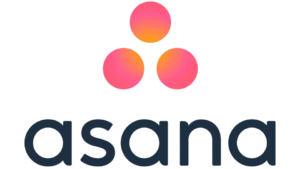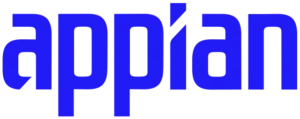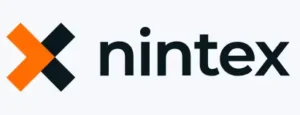In its simplest concept, work management aims to improve business workflows and processes to help an organization achieve its goals.
However, as workflows become more complex, so does their proper coordination and execution. In today’s landscape, even simple workflows require full collaboration between multiple teams and departments.
Put simply, work management has evolved. It now requires businesses to continuously improve and optimize their processes, achieving the highest state of performance across the entire organization.
This is where end-to-end work management software tools come in handy, increasing productivity and efficiency throughout teams and departments.
However, for work management software to be effective, it must be of the highest quality. And to help ensure you pick just the right tool, we’ve compiled a list of the best work management tools available.
Best Work Management Tools of 2024 Compared
| Software | No-Code | Price | Customer Rating |
| HighGear | Yes | From $63/month per licensed contributor | 5.0 out of 5 on GetApp |
| Asana | No | $10.99/month per user | 4.5 out of 5 on GetApp |
| Teamwork | No | $19.99/month per user | 4.4 out of 5 on GetApp |
| Appian | No | From $75/month per user | 4.2 out of 5 on GetApp |
| Nintex | No | From $25,000/year | 4.1 out of 5 on GetApp |
Top 5 Work Management Software Tools for 2024
Choosing work management software can be tricky. There are tons of options on the market, each with its own advantages and applications. However, at HighGear, we believe that for such a platform to work best, it should be simple yet powerful. The five tools outlined below fit this requirement. Still, there can only be one winner.
1. HighGear

One of the fundamentals of work management framework lies in empowering teams and employees to improve collaboration and increase productivity. To achieve this, though, your work management system must be simple to implement and execute.
This is precisely what HighGear offers. As a 100% no-code platform, HighGear allows business users to build custom workflows in days rather than weeks.
HighGear’s workflow management software allows you to build, execute, and manage your business processes while increasing collaboration and productivity across your organization. All this without requiring even basic coding knowledge!
HighGear’s key highlights for work management include:
- No-Code Workflows: While other tools on this list require basic coding knowledge, HighGear is entirely no-code, allowing business users to effortlessly build, employ, manage, and automate simple and enterprise-grade workflows without any IT experience.
- Visual Workflow Builder: HighGear comes equipped with an intuitive visual workflow builder. Using it, you’ll be able to build and visualize custom workflows without any IT assistance, helping you better manage and optimize your business processes.
- Enterprise Task Manager: With HighGear, you’ll be able to quickly create and assign tasks. Our task manager comes equipped with automated routing and an advanced reporting system, providing you with an effective solution for taking control of your work management.
- Real-Time Analytics & Reporting: Work management requires constant optimization. This can only be done with all the necessary data provided. HighGear offers users an advanced analytics and reporting system, giving you detailed insight into your business performance.
- Extensive Integration Infrastructure: To ensure effective work management, the platform you choose should easily integrate with other tools and software you use. HighGear natively integrates with over 5,000 apps and tools, including Office 365, Zapier, Okta, and HubSpot.
EXPLORE HIGHGEAR’S WORK MANAGEMENT SOLUTIONS
2. Asana

Asana is one of the most recognized brands on the market. It’s a simple-to-use work management platform that allows users to seamlessly deploy and manage workflows across an organization.
The platform boasts multiple features and tools that aim to improve work management. In fact, the number of available features can at times be overwhelming.
One of the key disadvantages of Asana is its steep learning curve. You’ll need to spend hours glued to the screen to unlock its full potential, testing various tools and features. Not to mention that building more complex applications also requires coding knowledge.
Of course, Asana is still a good option, especially for smaller businesses. It provides a range of useful work management tools, including:
- Advanced Collaboration and Communication: Asana’s primary goal is to improve cross-team communication and collaboration. This is where the platform shines, offering advanced communication features and integrations with popular tools like Slack and Teams.
- Workflow Automation: Asana allows business users to create and automate simple workflows, streamlining repetitive tasks for improved productivity. For more complex workflows, however, you’ll likely need help from your IT department.
- Visual Project Planning: With Asana, users can visualize their projects and tasks on a dynamic timeline that significantly enhances the overall planning process, helping them identify dependencies and ensure projects are on schedule.
- Robust Integration Ecosystem: Similarly to HighGear, Asana boasts an impressive number of integrations, including such apps as Dropbox, Trello, Google Drive, Slack, and Salesforce.
3. Teamwork

Teamwork is another established work management software provider. Unlike HighGear, and like Asana, Teamwork is a low-code platform, meaning that crafting and delploying more complex workflows and projects requires help from a developer trained in coding.
On the other hand, Teamwork comes with advanced client collaboration features, boosting communication and cooperation between teams and clients.
If you’re looking for a more versatile and easy-to-integrate work management software tool, Teamwork might not be the best choice. That being said, It still provides some useful features, including:
- Client Management: Teamwork users can grant their clients unlimited free access to projects. This way, clients can better communicate their needs, providing teams with a platform required to provide better services and build client-oriented workflows.
- Remote Collaboration: Teamwork can serve as a centralized communication center for an organization. It offers advanced collaboration features, helping remote teams and users stay connected and improving cross-team communication and task management.
- Effective Planning: Like Asana, Teamwork takes advantage of visualized planning, providing users with custom and interactive templates they can use to break down larger projects and workflows into smaller tasks, increasing process management and efficiency.
- Gantt Charts: Teamwork employs interactive Gantt charts, allowing users to better visualize and manage their projects by adding tasks and milestones, logging time, and adjusting the project’s timeframe.
4. Appian

Appian is a good option for those who value simplicity. It comes with a minimalist interface that allows users to effortlessly create, deploy, and manage simple workflows.
However, as a low-code platform, Appian still relies on coding skills, especially when it comes to more complex projects and processes.
For basic workflow management, Appian works brilliantly. However, if you want to take your enterprise work management to the next level, tools like HighGear are more suitable to achieve this goal.
Of course, Appian is still a solid work management tool, providing users with several useful solutions, such as:
- Visual Workflow Builder: Appian’s visual workflow designer is similar to HighGear’s. It’s also intuitive, although it caters more to users with some coding background, providing a steeper learning curve for average users.
- Advanced Analytics: Appian offers a pretty advanced analytics and reporting system, utilizing custom forms, reports, and data charts for more efficient management and workflow optimization.
- Process Mapping: Appian does a brilliant job of providing developers with robust process mapping and management systems, helping them build and automate custom applications faster.
- Hassle-Free Integration: Appian is designed to work seamlessly with other popular tools and platforms. Integrating it with other apps is straightforward, and, like HighGear, users are able to quickly build external integrations through Open API standards.
5. Nintex

Mostly recognized for its automation capabilities, Nintex is another popular option for work management software. Like other platforms on this list, though, integrating it within your enterprise can be tricky.
To take advantage of everything Nintex offers, you need at least basic coding knowledge. Without it, you won’t be able to build more complex workflows.
Once you crack all of the platform’s secrets, though, it will provide you with a handful of useful work management tools, including:
- Workflow Cloud Builder: The platform’s drag-and-drop builder looks similar to HighGear’s, allowing users to quickly design, deploy, and manage simple tasks and workflows.
- Enhanced Compliance: Nintex users can employ robust compliance necessities in their workflows. There are several options that allow this, but utilizing them requires coding skills.
- Mobile Accessibility: Nintex’s platform is well-designed for mobile devices, allowing users to optimize their work on the go.
Why You Need Work Management Software

Efficient work management is crucial for your business to achieve its goals and establish its competitive advantage through continuous improvement. Establishing a successful work management system, however, requires an end-to-end approach, which only dedicated software tools can provide.
Here’s how work management software can improve your business processes:
- Increased Process Efficiency
Work management software can help you design, prioritize, and automate mundane tasks and workflows, streamlining your business processes, improving productivity, and, as a result, increasing your overall efficiency.
- Enhanced Collaboration
Tools like HighGear empower business users, facilitating collaboration between teams and individual users, allowing them to seamlessly share necessary information and give real-time updates.
- Better Resource Management
Work management tools come with robust analytics and reporting systems, providing managers with real-time visibility into projects and workflows, allowing them to better allocate resources and budgets.
- Scalability
Work management software like HighGear scales with the organization, accommodating growing teams and projects without compromising performance or functionality. - Integration
Work management tools integrate with other software applications such as calendars, email clients, document management systems, and communication tools, providing a seamless experience and reducing the need for manual data entry or switching between multiple platforms.
Choosing the Right Work Management Software
While the options provided above are all excellent choices when considering which work management software to choose, which one you pick depends on your individual business needs, circumstances, and other factors you deem important. However, if you’re not sure what to look for from work management software, the best idea is to consider the following factors:
- Ease of Use
Although work management software should come with powerful features, it should also be easy to integrate across teams and departments. Look for a platform that guarantees seamless integration into your existing processes without any disruptions. For this purpose, it’s best to consider low-code or, even better, no-code work management tools, such as HighGear.
- Workflow Automation
Automating mundane tasks and workflows is the best way to boost productivity across teams. Choose a work management tool that provides robust yet simple-to-deploy workflow automation features.
- Flexibility
A good work management tool should be flexible and easily customizable. HighGear, for instance, allows organizations of all sizes to fine-tune its software to their needs, providing them with advanced customization.
- Integration Capabilities
You likely use numerous apps and platforms within your organization. The right work management software should allow you to seamlessly integrate them, allowing you to build an efficient application ecosystem.
- Support and Training
Even the simplest work management software might take some time to master. If you encounter any issues, you should have access to the provider’s support and resources, ensuring you receive the help needed to seamlessly integrate the new software into your business.
Considering the factors above should help you better understand your needs and choose a work management solution that fits them best. Take your time considering various options, and remember that our support team is here if you need help. We’ll be happy to help you with this crucial business decision.
Elevate Your Work Management
Introducing a reliable work management software tool is no longer an option. It’s a necessity. With the right platform in place, you’ll be able to elevate your organization, ensuring it always works like a well-oiled machine.
Choosing such software, however, can be difficult. There are tons of options available, and each has something to offer.
However, if you’re looking for a work management platform that is not only powerful but also easy to integrate, there can only be one choice – HighGear.
As a no-code solution, HighGear empowers business users of all backgrounds to create, deploy, and manage custom workflows. Unlike traditional low-code platforms, HighGear requires zero coding experience, setting it apart from its competitors.
